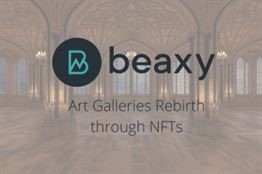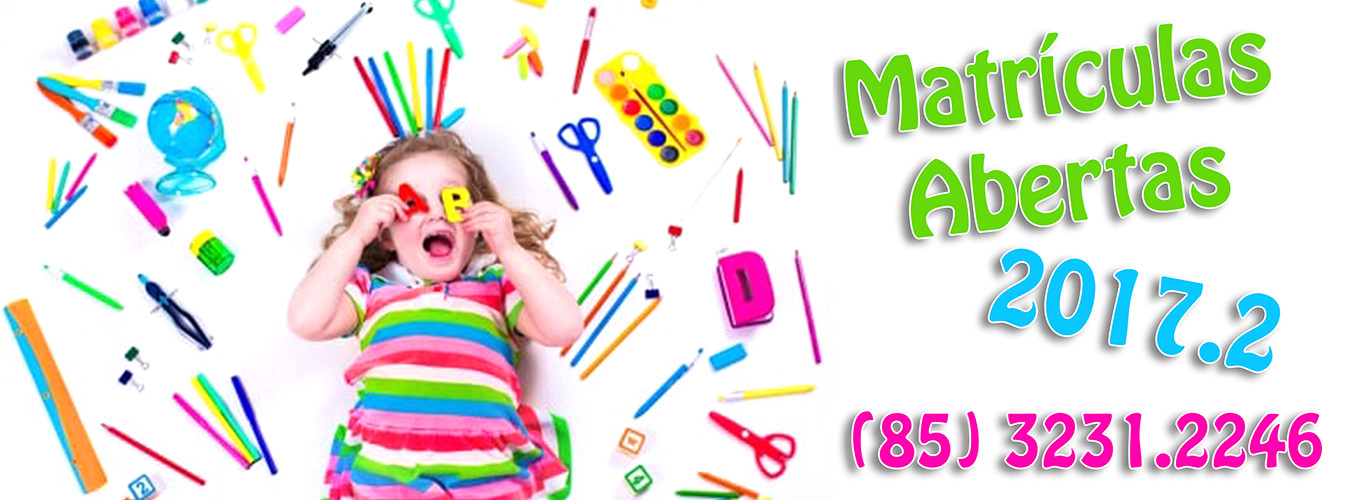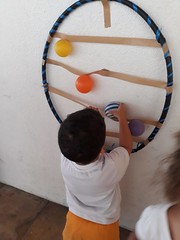What is Commodity Money? with pictures
20 de abril de 2022 - 5:56 AM - Escrito por: Raphael
Content
Economists measure the money supply because it affects economic activity. We want to include as part of the money supply those things that serve as media of exchange. However, the items that provide this function have varied over time. Cryptocurrency enthusiasts are continually striving to solve some of the problems with cryptocurrency. A major problem with Bitcoin and other cryptocurrencies is that it takes considerable time to process transactions. One solution was to increase the block size of the individual blocks in the blockchain, so that more transactions can be processed in a batch. However, this can also slow the network and require more time to accumulate enough transactions to fill the block. Only when 1 of the users terminates the relationship will the blockchain be updated and any remaining funds released to the appropriate parties. Although the supply of gold and Bitcoins is limited, they cannot serve as money in most modern economies, because their value fluctuates considerably. Over the span of 1 year, the US dollar value of Bitcoin has varied from $5,000 to over $48,000.
The main advantage of money over barter is that money is always going to be usable. This is because of the need for what is called a “coincidence of wants” (sometimes called a “double coincidence of wants”). As verbs the difference between barter and negotiate is that barter is exchange goods or services without involving money while negotiate is to confer with others in order to come to terms or reach an agreement. Money solves the problem of double coincidence of wants by acting as a medium of exchange. Double coincidence of wants implies a situation where two parties agree to sell and buy each other’s commodities., i.e., what one party desires to sell is exactly what the other party wishes to buy. But it is regrettable that such superficial distinctions as this should still play a part in economic discussion. Of course, uptil now, there is no direct money printing that the RBI has carried out to finance the government.
They have to pay taxes in dollars, which essentially creates a demand for dollars. This demand is what fundamentally drives the value of money like the dollar. Fiat money gives central banks greater control over the economy because they can control how much money is printed. Most modern paper currencies, such as the U.S. dollar, are fiat currencies. One danger of fiat money is that governments will print too much of it, resulting in hyperinflation. Government and a central bank provided fiat money and enforced repayment of loans, giving fiat a predictable value in trade, and also rationalizing the allocation of labor to government service, in return for a fiat salary. Read more about how to convert ethereum to usd here. We compare the monetary value of the two money systems themselves, by introducing a natural money-metric social welfare function. Because labor allocation both to production and potentially to government of the economy is endogenous, the only constraint in the society is its population, so that the natural money-metric is labor.
Sugar and metals as commodity money in colonial Brazil
Therefore, the central bank cannot simply print money as it wants. M1 – This category of money includes all physical denominations of coins and currency; demand deposits, which are checking accounts and NOW accounts; and travelers’ checks. This category of money is the narrowest of the three, and is essentially the money used to buy things and make payments (see the “active money” section below). Like gold and other precious metals, money has worth because for most people it represents something valuable. Perfect examples of commodity money include a struck coin made of gold, a bushel of corn, and a pack of cigarettes in prison. If our current fiat system fails, what replaces it will more likely be a new representative money rather than a strict commodity money.
Fiat money, on the other hand, due to its ease of use and multiple denominations, is very popular. Fiat money and Commodity money are in complete contrast with each other. Commodity money has an intrinsic value of its own whereas the fiat money has no intrinsic value. Their economy was based on trading, lumbering,fishing, whaling, shipping, fur trading and ship building. The Middle Colonies also practiced trade like New England, but typically they were trading raw materials for manufactured items. Which of the following are money in the United States today and which are not? Is a written order to a bank to transfer ownership of a checkable deposit. Suppose, for example, that you have $100 in your checking account and you write a check to your campus bookstore for $30 or instruct the clerk to swipe your debit card and “charge” it $30.
Commodity
However, the impracticality of commodity money created the shift towards “representative money” – money that lacks intrinsic value but is backed by its ability to be traded for a physical commodity. The most notable use of representative money is under the gold standard, where each country’s currency is tied to a fixed amount of gold. Commodity money has been used throughout history as a medium of economic exchange. Commodity money is money that has intrinsic value, meaning that it has value even if it is not used as money. Examples of commodity money include precious metals, foodstuffs, https://www.beaxy.com/buy-sell/drgn-btc/ and even cigarettes. The role of a mint and of coin differs between commodity money and fiat money. In commodity money, the coin retains its value if it is melted and physically altered, while in a fiat money it does not. Usually, in a fiat money the value drops if the coin is converted to metal, but in a few cases the value of metals in fiat moneys have been allowed to rise to values larger than the face value of the coin. In India, for example fiat Rupees disappeared from the market after 2007 when their content of stainless steel became larger than the fiat or face value of the coins.
- Dried beans, grain and pieces of wood can be commodity money if people agree that they have value and are willing to trade them for other goods and services.
- Bitcoin is also neither commodity money , representative money , nor fiat money .
- In fact, the U.S. government protects your right to use U.S. currency to pay your bills.
- We can also think about what makes a good or bad money in terms of the functions that it serves.
Many of them were at least a couple feet across, and thus weighed hundreds of pounds. The biggest were over ten feet across and weighed several thousands of pounds. However, depending on where they live in the world, people are not very accustomed to keeping track of the quality of money itself, or deciding which type of money to hold. Soft commodities represent some of the oldest types of futures known to have been actively traded. This group of agricultural products may include products such as soybeans, cocoa, coffee, cotton, sugar, rice, and wheat, as well as all manner of livestock.
Twenty-dollar bills are fairly durable and can be easily replaced if they become worn. Even better, a long trip to market does not threaten the health or value of the bill. Trickle-Up Economics Describes the best tax policy for any country to maximize happiness and economic wealth, based on simple economic principles. The Bureau of Engraving and Printing Store – Here, you can buy new bills or coins directly from government agency that creates them. Although it has no real value, many people continue to think that it will continue to rise. So long as enough people continue to think that it will rise ever higher, then it will keep going up. Of course, the higher it goes, the greater the risk of buying it. As it ascends ever higher, more speculators will be drawn in.
It combines the features of both making it commodity money, i.e. a commodity which historically has been chosen as money and still remains a global monetary asset. How Fed Economic Stimulus Works and Its Effect on the Economy The central bank of America is the Federal Reserve, and the Fed has the responsibility of deciding how much money there is in the economy…. The Covid-19 pandemic has exposed the flaws in our current fiat monetary system by forcing the Federal Reserve to open its piggy bank and pour out all the money it can to keep the country and economy afloat. China began as the first company to use fiat currency around 1000 AD, and as recently as 1971, when Richard Nixon took the U.S. off the gold standard. The gold standard performed the function of the monetary system of choice for much of the world until the early 1970s, when the U.S. moved away from the currency.
In this situation, both sugar and coffee are commodities that have intrinsic values of their own and when exchanged for each other play the role of money. Second, opponents of fiat money claim that the ability for a government to print money without having to back it up with a specific commodity is potentially dangerous. The term money, as used by economists and throughout this book, has the very specific definition given in the text. People can hold assets in a variety of forms, from works of art to stock certificates to currency or checking account balances.
In a straight barter system, the commodities being traded are generally perishable. You can gather tons and tons of wheat by making shrewd trade deals, but if you try to save the wheat, it will eventually go bad. Services like Apple Pay and Samsung Pay enable customers to pay by simply tapping their phones to a point-of-sale terminal. It replaces the need to carry a physical card in your wallet. If an object lost all or most of its value over a short period, then it would not be acceptable in exchange. Imagine for a moment an economy in which ice played the role of money. Except on the coldest days, the ice you receive on payday would not last long enough for you to buy anything with it. It would be a terrible store of value and, as a result, would not do a good job of facilitating exchange.
European explorers dumped entire boatloads of cacao beans because they didn’t value them like the Aztecs did. At Oveit, we are truly impressed by how money evolved over time. Our closed-loop payment solution wouldn’t be in place without this continuous development and eagerness to dream big. We want to focus more on local economies and their overall well-being, providing them with our Economy as a Service solution. The evolution of money indicates technological and economic development. From exchanging cows and chickens to digital currencies, humankind never fails to adapt and find innovative alternatives.
O’Keefe’s genius was to recognize that, by importing the stones for his new friends, he could exchange them for labor on Yap’s coconut plantations. Most types of cash used today do not have any real intrinsic value. For example, a banknote is virtually worthless in itself and only has value because society accepts it as a measure of currency and a unit of exchange. Commodity money is an asset that is backed by a specific commodity.
Hence, for bitcoin, and cryptocurrencies in general, to be mass-adopted as money for daily transactions, we believe that solving the blockchain scalability problem is a prerequisite. Examples of commodity money includes commodities such as gold, silver, copper. Examples of fiduciary money include instruments such as checks, banknotes, and drafts. They are a type of money as holders of fiduciary money can convert them into fiat or other types of money. Before 1970, the world was governed by the gold standard, which allowed people to swap the currency they owned for gold at any time. Countries that adhered to the gold standard established a fixed price for gold and traded gold at that price, therefore maintaining the gold standard. The value of the currency was determined based on the fixed price established. Commodity money is a medium exchange with intrinsic value due to its use for purposes other than money. There will always be a demand for gold as it can be used in jewelry, making computers, Olympic medals, etc.
Fiat Money: Definition, How It Works, Pros & Cons – Business Insider
Fiat Money: Definition, How It Works, Pros & Cons.
Posted: Fri, 15 Jul 2022 07:00:00 GMT [source]
Today, there are over 200 million Visa cards in use in the United States alone. As money became the main standard and societies started to realize that living a good life is dictated by a piece of paper, life was not safe anymore. Paper money had no protection from theft and rich people were treated as targets by thieves. This model enabled people to save their earnings into a safe savings account and allocate loans for people in need.
Leather money was used around 1100, but only as a temporary substitute when silver supplies ran low. A Swedish bank issued paper money in 1661, but they eventually flooded the market with it, and it lost its value. The reason that we rarely see exchange without money is that it is so inefficient. Without money, a coincidence of wants is unlikely, so desirable trades do not occur, and value is not created. If you want a meal in a restaurant, the owner will always serve it to you if you have money. You don’t care what good or service your employer produces; as long as your employer pays you in money, you are happy to supply your labor time to them. Countries that stuck to the silver standard for too long, like India and China, saw their currency weaken as demand for the metal dropped in North America and Europe, resulting in negative economic consequences.
Being the most malleable and ductile of metals, it can also be easily cut into different sizes to correspond to specific values. Hence, it can be kept for a long time and still retain its value. It is divisible into smaller units to make smaller payments, or large amounts of money can be carried with much less burden than carrying the equivalent value of barter. For instance, a $100 bill in American currency weighs no more than a $1 bill. Eventually, many governments no longer backed fiat currency, and the money increasingly took on a value based on public confidence. As of 1933, U.S. citizens could no longer exchange currency with the U.S. government for gold. Fiat money is a government-issued currency that is not backed by a physical commodity, such as gold or silver. Remember, as long as people have faith in the currency, a central bank can issue more of it. But if the Fed issues too much money, the value will go down, as with anything that has a higher supply than demand.
Inflation does the most damage to money as a store of value, since its value continually declines as more money is created. Rather than keeping an inflating currency, people spend it as fast as possible before it loses value, which, in turn, causes prices to rise even more. People use fiat money only if they believe that it can be used in the future and that it will not lose value. The government will also usually encourage the use of its money through the force of law, primarily by declaring it as legal tender. Legal tender is a form of money that must be accepted for the payment of debts and other liabilities. For instance, since 1862, all United States dollars were printed with the phrase “This note is legal tender for all debts, public and private.” Representative money is paper currency that can be exchanged for a fixed amount of a valuable commodity, usually gold or silver.
People who had been excluded from any possibility of holding political power could amass wealth through trade or by providing a service. That wealth could then be used to purchase political or even military power. So money made civilization more democratic by taking some power out of the hands of noble families that had monopolized it for hundreds of years. This is not to mention the fact that carrying a handful of coins is much easier than lugging around a barrel of grain or a cow with you whenever you need to make a trade. Now, if you live in a place where round, stamped coins are widely considered to have a certain value and can be exchanged for other things, then you just have to find someone who needs wheat. That person will take the wheat in exchange for an agreed-upon amount of coins, which you can later use to buy a cow from someone else. In fact, the development of currency has shaped human civilization. Cities and nations as we know them would not exist without it. It is difficult to overstate the importance of currency in modern life.
All historical attempts at maintaining a fiat currency have failed, usually with disastrous consequences, and ultimately with a return to commodity money. Although overprinting fiat currencies could lead tohyperinflation, most developed countries usually experience a moderate amount of inflation. Hyperinflation has occurred in the past, even with commodity money, and it could occur in the case that a fiat currency rapidly loses value, such as when people lose faith in the nation’s currency. The U.S. dollar is fiat money, as are the euro and many other major world currencies. This approach differs from money whose value is underpinned by some physical good such as gold or silver, called commodity money. The United States, for example, used a gold standard for most of the late 19th and early 20th century.
Where does the value of a fiat currency come from?
A fiat currency is a national currency that is not pegged to the price of a commodity such as gold or silver. The value of fiat money is largely based on the public's faith in the currency's issuer, which is normally that country's government or central bank.
Colonial paper money rarely lasted very long because the colonies generally issued too much of it and the resulting inflation made the bills worthless. For example, it took about 133 times as many “Saddam” dinars as “Swiss” dinars to buy a man’s suit in Iraq at the time. The new notes, sometimes called “Bremer” dinars, were printed in Britain and elsewhere and flown into Iraq on 22 flights using Boeing 747s and other large aircraft. In both the northern and southern parts of Iraq, citizens turned in their old dinars for the new ones, suggesting at least more confidence at that moment in the “Bremer” dinar than in either the “Saddam” or “Swiss” dinars. What makes something money is really found in its acceptability, not in whether or not it has intrinsic value or whether or not a government has declared it as such. For example, fiat money tends to be accepted so long as too much of it is not printed too quickly. When that happens, as it did in Russia in the 1990s, people tend to look for other items to serve as money. In the case of Russia, the U.S. dollar became a popular form of money, even though the Russian government still declared the ruble to be its fiat money. To maintain value, the supply of Bitcoins is limited to 21 million. This is why Bitcoin continuously varies widely against government-issued currencies, such as the United States dollar.
What is commodity money backed by?
Commodity-backed money means the currency being used in a nation can be directly exchanged for a specific commodity. Historically and most commonly, this commodity was gold. Simply put, commodity-backed money is money that is supported by something tangible that has an intrinsic value.
Likewise, gold has reached almost $2000 an ounce, only to drop back to around $1200 an ounce. However, these properties are desirable and effective only if the value of the currency is stable. While all currencies experience some inflation, most of this inflation is low and predictable. But if the value of currency fluctuates widely, then its utility as money declines dramatically. This is why Bitcoin will never serve as a currency for major economies and why virtually every country in the world has moved away from the gold standard and why they will never return. A fixed exchange rate is when one country pegs its currency to an anchor currency so that both currencies move identically.

The development of money has been marked by repeated innovations in the objects used as money. We’ve created a new place where questions are at the center of learning. Britannica celebrates the centennial of the Nineteenth Amendment, highlighting suffragists and history-making politicians. Britannica is the ultimate student resource for key school subjects like history, government, literature, and more. Get the latest tips you need to manage your money — delivered to you biweekly.
Compartilhe:














